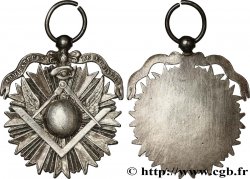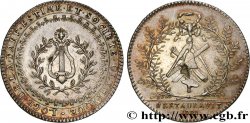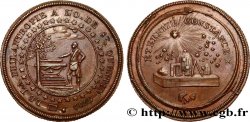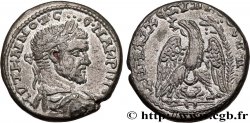fme_1006462 - FREEMASONRY Médaille, Ordre du Temple, Fabre-Palaprat
300.00 €(Approx. 333.00$ | 252.00£)
Quantity
Add to your cart

Type : Médaille, Ordre du Temple, Fabre-Palaprat
Date: n.d.
Mint name / Town : ORDRE DU TEMPLE
Metal : silver
Diameter : 35 mm
Orientation dies : 12 h.
Weight : 19,94 g.
Edge : lisse
Puncheon : sans poinçon
Rarity : R3
Coments on the condition:
Patine hétérogène légèrement irisée avec des traces d’usure, quelques coups et rayures. Tâches d’oxydation
Catalogue references :
Predigree :
Avec son étiquette de la Maison Platt
Obverse
Obverse legend : BHRNARDUS = RAYMUNDUS. D. G. H. FF. SS. S. M. P. ET. P. * FABRH = PALAPRAT*.
Obverse description : Buste de Fabre-Palaprat à gauche ; signé : COQUARDON* / CH. DU T. 1820.
Obverse translation : Par la grâce de Dieu Grand Maître et Patriarche des Saints Frères de Jérusalem.
Reverse
Reverse legend : PRO DEO Z PATRIA / AN. 686-1804 EL.
Reverse description : Blason écartelé au premier et quatrième des armes de l’Ordre, au deuxième et troisième des armes de FABRE-PALAPRAT, portant la tiare patriarcale et pontificale et une étoile d’hermine à croix de Jérusalem, le tout surmonté d’une bandelette au bout d’une pique.
Reverse translation : Pour Dieu et la Patrie.
Commentary
Marc Labouret indique que la titulature de l’avers et du revers sont en alphabet pseudo-templier. La loge des Chevaliers de la Croix invente en 1805 un système initiatique qui rompra avec le Grand Orient en 1811 des conséquences des fantaisies et des dérives mégalomane de son fondateur FABRE-PALAPRAT. Néanmoins, cet ordre rencontra un vif succès en région parisienne puisqu’on comptera plus de 500 chevaliers en 1810. Au décès de son fondateur, l’Ordre disparaîtra trois ans plus tard en 1841. Cette version en laiton semble être inédite au Labouret.








 Report a mistake
Report a mistake Print the page
Print the page Share my selection
Share my selection Ask a question
Ask a question Consign / sell
Consign / sell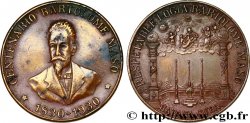
 Full data
Full data
